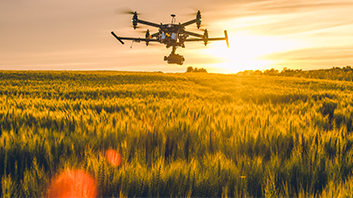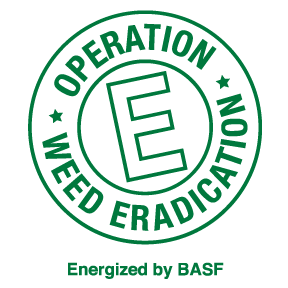Weed Control with a Bird’s Eye View
Drone technology gives farmers a new tool to help achieve clean fields all season long.

Technology is changing the face of American agriculture.
No longer can farmers solely depend on traditional management practices to deliver clean fields from planting through harvest. Today’s weed control calls for a diverse management toolbox to protect cropland from troublesome weed species like Palmer amaranth.
Yes, technology can play a key role in helping farmers with herbicide resistance and win the battle on weed control all season long.
Consider drone technology, for example. Before the science becomes a mainstay in the management toolbox, this versatile alternative can be used to help achieve clean fields all year long.
Affordable Technology
Five years ago, drones seemed to be an out-of-reach expense for many farmers; the technology has matured and changed.
According to Ryan Bergman, a technical project specialist in the Department of Ag and Biosystems Engineering at Iowa State University, farmers today can find low-end professional use drones to be very affordable.
“Those drones have built-in software and flight controls with great sensing capabilities that are included in the package,” Bergman explains. “That has really enabled a lot of the adoption that we’ve seen in the industry, and some of the push toward using them for weed detection and spraying weeds in fields.”
Although not yet commercially available, Bergman says drone herbicide application can be another tool for producers to include in their management toolbox to control weeds.
“Every grower has those unique scenarios that they find themselves in each year, and finding the scenarios where this type of technology might work is really where it’s going to pay off for some farmers,” he notes.
New Age Scouting
Efficiency is top of mind for growers, and drones can offer time and money savings to many production operations.
Armed with high-resolution imaging, drones can deliver an up-close look at fields throughout the growing season, providing an extra set of eyes for farmers when it comes to field scouting.
Jill Cain is a field biologist with BASF at its Midwest Research Farm in Seymour, Ill. She says agronomists could fly a drone over a grower’s field to scout for weeds.
“Not just the sub-sample but be able to really dive into what is going on in each and every acre,” she explains. “For weed control, we can start making maps of where weeds are and be able to possibly tailor applications to troublesome areas in the field. Then, you can program a spray drone that would be able to autonomously go out and even make a late-season application just on that weed.”
Using drones for weed control could also be taken a step further, Cain says, noting that some drones are being developed to select and pick weeds in a field.
Bergman says drones offer growers another option to check the status of a crop without damaging it late in the growing season.
“When the crop is big, we risk a lot of damage going in there late in the season. So, if we can use a drone to get there, that is a very appealing option for some growers.”
—Ryan Bergman, technical project specialist, Iowa State University
Embracing the Challenges
One of the biggest hurdles growers face with drone technology lies in the classification. Bergman says flying a drone for agriculture use is typically classified as a commercial application, so a remote pilot license would be required for the person who flies it.
But using drones to spray weeds can add another barrier.
“If we’re going to be applying pesticide through it, there’s a whole other level of regulations that must be understood and worked through to make sure we can do those in a safe and legal manner,” Bergman explains. “As drone technology gets more attractive for growers, I think we will start to see some of the laws and regulations around it adapt and change as well, hopefully for the better in terms of ease of use.”
For now, Bergman says farmers should consider the possibilities drones might offer their operations and continue to monitor the progress companies make with the technology and how it might be regulated down the road.
“I think we’re going to see a lot of changes in the next several years,” Bergman says. “Pesticide management is going to be one of the next frontiers that companies, universities and other folks are going to be looking to apply drone technology to.”
Channeling the Future
According to Cain, companies like BASF are considering different application technologies such as drones as they determine the future of their research pipeline.
“We’re trying to see how all of this technology and this high-resolution imagery can help us be better at identifying the correct products to bring to market,” she explains. “That helps us create actual data that is relevant across different regions.”
While drones might not fit into every farmer’s management toolbox, Bergman says for the technology-minded grower, the automated option can be a way to step up weed control strategies.
“We’re definitely not going to see it mainstreamed for a little while yet, but we’re certainly going to have some folks attracted to it and be able to make it work for their operation,” he notes.
With farm country faced with labor shortages and continued consolidation, Cain says drones can help fill a gap in many operations.
“The more acres that a grower has to cover, everyone’s going to be looking for ways to be more efficient but also better stewards of the land. This technology really has some promise, and one of our goals is to figure out how we can use it.”
—Jill Cain, field biologist, BASF Midwest Research Farm, Seymour, Ill.
The bottom line, though, is that drone technology can offer farmers a combination of better scouting and a means of controlling weed escapes, adding another control measure to the management toolbox.
